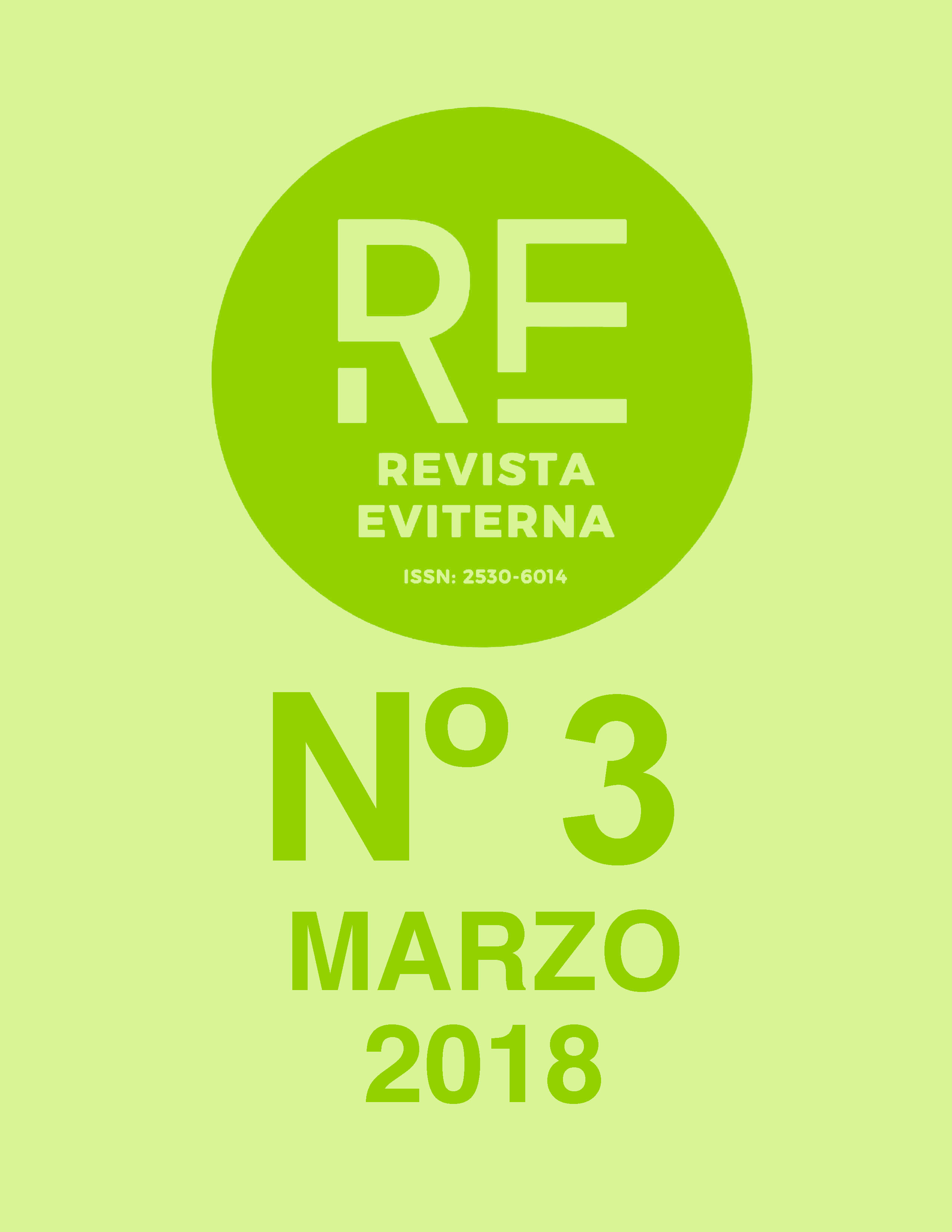Nature, Science, and Myth in the Landscape Art of Frederic Leighton
DOI:
https://doi.org/10.24310/Eviternare.v0i3.8163Keywords:
Frederic Leighton, Landscape, Open-air painting, Plein air painting, Science, Mythography, Nineteenth centuryAbstract
Frederic Leighton is mostly recognised as President of the Royal Academy in the latter half of the nineteenth century, exhibiting large scale figurative paintings of a high degree of finish. Scholarship has, however, overlooked his plein air paintings created during his frequent voyages to Italy, Spain, Egypt and Greece, to name a few. As Leighton’s oil sketches comprised of over 200 canvases and boards, their significance to his oeuvre is paramount and needs to be clearly articulated. Using the example of An Outcrop in the Campagna, this article explores how the three aspects – nature, science and myth – merged in Leighton’s vision of landscape. The painting’s composition and technique are examined, as well as the influence of Leighton’s circle, exemplified by Giovanni Costa and the Etruscan School of Art. Finally, Victorian solar physics and thermodynamics are presented as an important context for the symbolic dimension of Leighton’s landscapes.
Downloads
Metrics
Publication Facts
Reviewer profiles N/A
Author statements
Indexed in
-
—
- Academic society
- N/A
- Publisher
- Universidad de Málaga
References
BARRINGTON, Emilie (1906). The Life, Letters and Work of Frederic Leighton, 2 vols. London: George Allen.
BEER, Gilian (1989), “ ‘The Death of the Sun’: Victorian Solar Physics and Solar Myth”, in BULLEN, J. B. (ed.). The Sun is God: Painting, Literature and Mythology in the Nineteenth Century. Oxford: Oxford University Press, pp. 159-180.
BENSON, Donald R. (1987), ‘“Catching Light”: Physics and Art in Walter Pater’s Cultural Context’, in LEVINE, George (ed.). One Culture. Madison: University of Wisconsin Press, pp. 143-163.
BILLS, Mark and BRYANT, Barbara (2008). G. F. Watts: Victorian Visionary. New Haven and London: Yale University Press.
GALASSI, Peter (1991). Corot in Italy. New Haven and London: Yale University Press.
GOETHE, Johann Wolfgang (2000), “Goethe’s Theory of Colours”, in WEBER, A. S. (ed.). 19th Century Science: An Anthology. Ontario: Broadview Press.
HARRISON, Colin and NEWALL, Christopher (2010). The Pre-Raphaelites and Italy. Oxford: Ashmolean Museum.
HAMERTON, Philip Gilbert (1875), “Technical Notes on Lord Leighton”, Portfolio, pp. 31-32.
HOEPPE, Götz (2007). Why the Sky is Blue: Discovering the Color of Life. Princeton: Princeton University Press.
LANG, Mrs Andrew (1886). Sir Frederick Leighton, BART. London: Art Journal Office.
LEIGHTON, Frederic (1887), “Art in Modern Italy; Tuscany. The Renaissance” in LEIGHTON, Frederic. Addresses Delivered to the Students of the Royal Academy (1897). London: Kegan Paul, Trench, Trübner and Co., pp. 135-172.
LIGHTMAN, Bernard (1997), “ ‘The Voices of Nature’: Popularizing Victorian Science”, in LIGHTMAN, Bernard (ed.), Victorian Science in Context. Chicago: Chicago University Press, pp. 187-211.
NEWALL, Christopher (1989). The Etruscans: Painters of the Italian Landscape 1850-1900. Stoke-on-Trent: Stoke on Trent City Museum and Art Gallery.
ORMOND, Leonée and Richard (1975). Lord Leighton. New Haven and London: Yale University Press.
OUTRAM, Dorinda (2006). Panorama of the Enlightenment. Los Angeles: Getty Publications.
PAINTING FROM NATURE: The Tradition of Open-Air Oil Sketching from the 17th to 19th Centuries (1981). London: Arts Council of Great Britain.
REYNOLDS, Simon (1992), “William Blake Richmond in Italy”, Apollo, vol. 136, no. 367, pp. 161-165.
RIOPELLE, Christopher (1999), “52. An Outcrop in the Campagna, perhaps 1866”, in RIOPELLE, Christopher and BRAY, Xavier. A Brush with Nature: The Gere Collection of Landscape Oil Sketches. London, National Gallery Publications.
ROSSETTI AGRESTI, Olivia (1907). Giovanni Costa: His Life, Work, and Times. London: Gay and Bird, 1907.
RUSKIN, John (1869). The Queen of the Air: Being A Study of the Greek Myths of Cloud and Storm. London: Smith, Elder and Co.
RUSKIN, John (1884). The Storm-Cloud of the Nineteenth Century. Two Lectures Delivered at the London Institution. Kent: George Allen.
SCHMIDT, Arnika (2016). Nino Costa (1826-1903): Transnational Exchange in European Landscape Painting. Milan: Silvana Editoriale.
STAFFORD, Barbara Maria (1984). Voyage into Substance: Art, Science, Nature, and the Illustrated Travel Account, 1760-1840. Cambridge, Massachusettes and London: MIT Prress.
STALEY, Allen and NEWALL, Christopher (2004). Pre-Raphaelite Vision: Truth to Nature. London: Tate Publishing.
TYNDALL, John (1871). Fragmets of Science for Unscientific People: A Series of Detached Essays, Lectures, and Reviews. New York: D. Appleton and Company.
WEBER, A. S. (2010) (ed.). 19th Century Science: An Anthology. Ontario: Broadview Press.
YANNIS, Kanarakis (2010), “The Aesthete as a Scientist: Walter Pater and Nineteenth-Century Science”, Victorian Network, vol. 2, no. 1, pp. 88-105.
Downloads
Published
How to Cite
Issue
Section
License
All the contents published in Revista Eviterna are subject to the Creative Commons Reconocimento-NoComercia-Compartirigual 4.0 license, the full text of which can be found at <http://creativecommons.org/licenses/by-nc-sa/4.0>
They may be copied, used, disseminated, transmitted and publicly exposed, provided that:
The authorship and original source of your publication (Journal, editorial and URL of the work) are cited.
They are not used for commercial purposes.
The existence and specifications of this use license are mentioned.

Copyright is of two kinds: moral rights and patrimonial rights. Moral rights are perpetual, inalienable, inalienable, inalienable, inalienable and imprescriptible prerogatives.
In accordance with copyright legislation, Revista Eviterna recognizes and respects the moral rights of the authors, as well as the ownership of the economic right, which will be transferred to the University of Malaga for dissemination in open access.
The economic rights refer to the benefits obtained by the use or disclosure of the works. Revista Eviterna is published in open access and is exclusively authorized to carry out or authorize by any means the use, distribution, disclosure, reproduction, adaptation, translation or transformation of the work.
It is the responsibility of the authors to obtain the necessary permissions of the images that are subject to copyright.







12.png)



